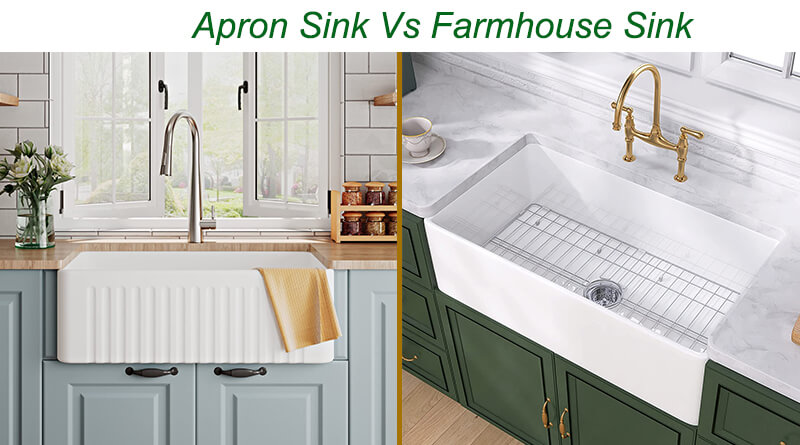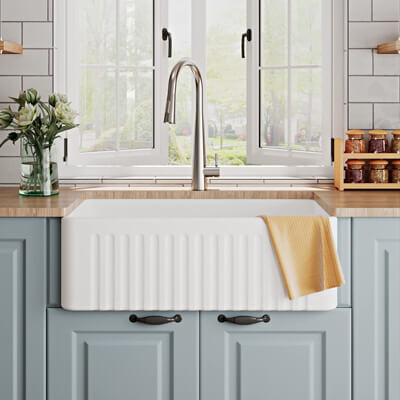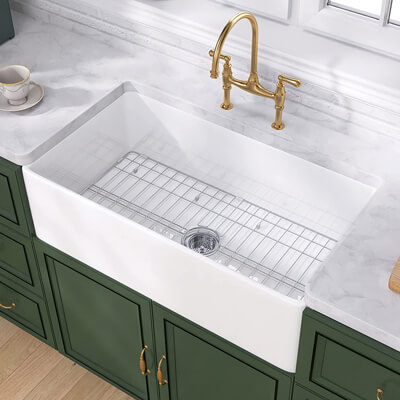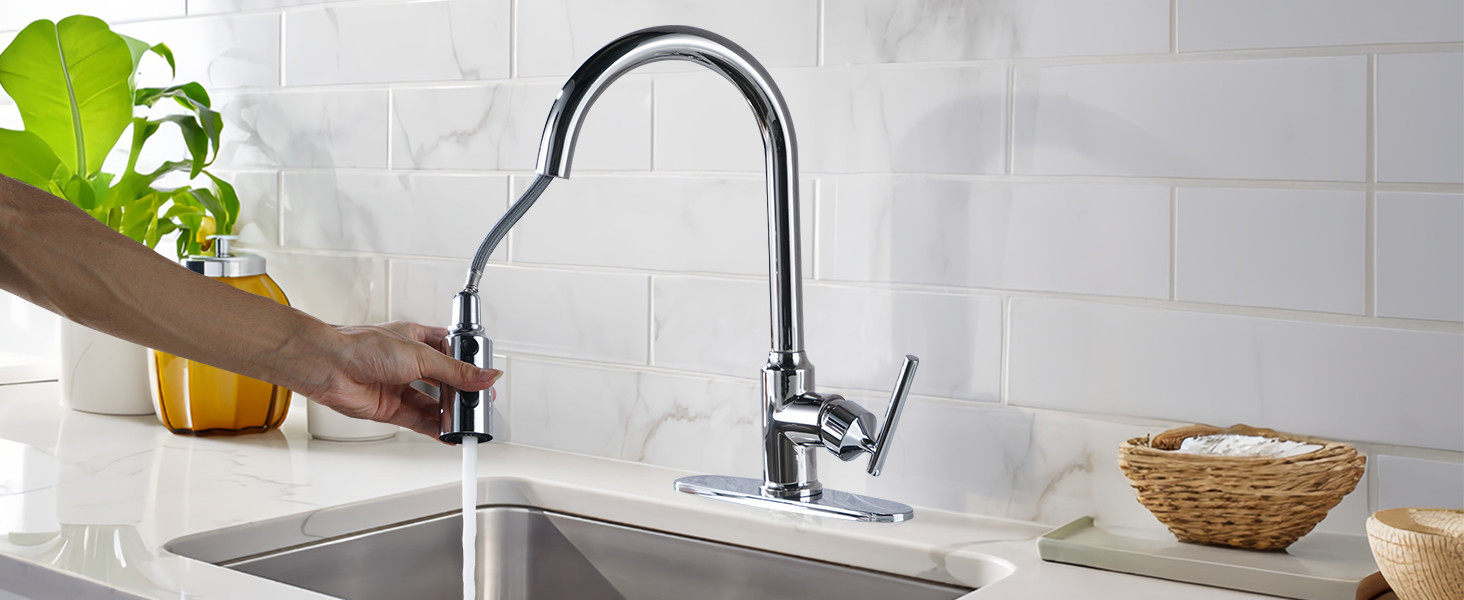
When it comes to choosing a sink for your kitchen, two popular options that often come up are the apron sink and the farmhouse sink. While they may appear similar at first glance, there are distinct differences between apron sink vs farmhouse sink. In this article, we will explore the characteristics, design elements, and functional aspects of both apron sinks and farmhouse sinks to help you make an informed decision for your kitchen.
Apron Sink Vs Farmhouse Sink: What Are The Differences
Design and Appearance
Apron Sink: Also known as a front apron sink, this type of sink features a front-facing panel that extends down and overlaps the edge of the countertop. It creates a seamless and sleek look, as the edges of the countertop are covered by the sink’s front panel. Apron sinks are available in various materials, including stainless steel, fireclay, and porcelain, allowing you to choose the one that best matches your kitchen decor.
Farmhouse Sink: Farmhouse sinks, on the other hand, have a traditional and rustic charm. They are characterized by a large, deep basin and an exposed front panel that extends beyond the countertop. Farmhouse sinks typically feature a straight front or an arched front panel, adding a distinct visual element to the kitchen. These sinks are often made of materials like fireclay, cast iron, or copper, which enhance their farmhouse aesthetic.
Installation
Apron Sink: Installing an apron sink requires the removal of the existing countertop or cabinetry beneath the sink. The sink is then mounted onto the cabinet, and the front panel extends outward, resting on the supports provided. This installation method ensures that the weight of the sink is evenly distributed and provides stability. However, it is essential to consider the extra space needed for the apron sink’s front panel when planning the kitchen layout.
Farmhouse Sink: Farmhouse sinks are installed by positioning the sink into a specially designed base cabinet that supports its weight. The sink’s front panel remains exposed, extending beyond the edge of the countertop. Unlike apron sinks, farmhouse sinks do not require any alterations to the existing countertop or cabinetry, making them easier to install.
Functionality
Apron Sink: Apron sinks are known for their large and deep basin, offering ample space for washing dishes and pots. The extended front panel also acts as a splash guard, preventing water from splashing onto the surrounding countertops. The design of apron sinks makes it easy to stand in front of the sink without bending over, reducing strain on the back and shoulders. However, the lack of an overflow drain is a consideration to keep in mind when using an apron sink.
Farmhouse Sink: Similar to apron sinks, farmhouse sinks provide a generous amount of space for washing dishes and other kitchen tasks. The deep basin accommodates large pots and pans, making it convenient for those who frequently cook or entertain. Farmhouse sinks often come with an overflow drain, preventing water from spilling over the edges. The exposed front panel adds a vintage touch and makes it easy to reach the sink without leaning over.
Maintenance
Apron Sink: Maintaining an apron sink is relatively straightforward. The smooth and sleek surface of materials like stainless steel or porcelain makes cleaning a breeze. However, it is important to be mindful of any abrasive cleaners that can damage the sink’s surface. Additionally, the exposed front panel may require occasional cleaning and wiping to remove any splashes or stains.
Farmhouse Sink: Farmhouse sinks, especially those made of fireclay or porcelain, are known for their durability and resistance to scratches and stains. Routine cleaning with mild soap and water is usually sufficient to maintain their appearance. The exposed front panel may require regular wiping and drying to prevent water spots or stains.
Conclusion
In conclusion, both apron sinks and farmhouse sinks have their own unique characteristics and charm. Apron sinks offer a modern and sleek look, while farmhouse sinks provide a traditional and rustic feel to the kitchen. Consider the design aesthetics, installation requirements, functionality, and maintenance aspects when choosing between the two. Ultimately, the decision depends on your personal style preferences, kitchen layout, and practical needs.
 WOWOW Faucets
WOWOW Faucets







您好!Please sign in